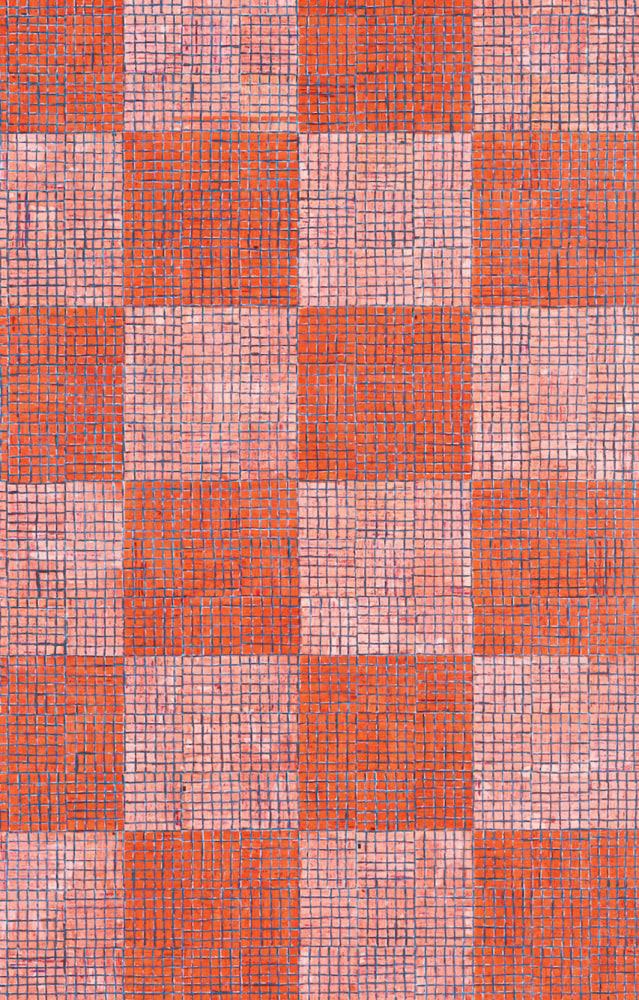
With the debut of his “Under:Conscious Drawings” series, 2014, at Gray Warehouse, McArthur Binion asked us, again, what the Minimal surface gives and what it withholds. Each of the works on paper is more than four feet square and features a central pool of crowded marks in colored pencil, charcoal, graphite, or ballpoint pen. Using both hands simultaneously, the artist filled his visual field up to the length of his arm span. His choice of drafting implement affects the density and scale of his marks, yet each roughly circular form is meticulously consistent in its comprehensiveness.
The drawings depart from Binion’s more well-known painting series “DNA:Work,” 2011–, a selection of which was also included in the Gray Warehouse exhibition. The artist makes these images—densely layered arrangements of grids—with oil stick, ink, and multiple collaged copies of personal ephemera: his private phone book, his birth certificate, and a photograph of his Mississippi childhood home, all of which are repeated within the grid structure of a given painting. The thickness of the oil stick’s trail, the occlusions of the grid’s regularity, and the repetition of the barely recognizable documents serve to block legibility and full access to these autobiographical traces. The paintings promise personal disclosure but recalcitrantly hide it within the supposedly universal, endlessly extensible, and immediately graspable modernist grid. This astute formal jamming of self-exposure and self-expression is one reason that Binion’s art might be seen allegorically as defying the racism of visual taxonomies in which surface is taken as primary and determining. The private coordinates that the artist embeds within the paintings’ knowing performances of opacity and flatness challenge the viewer to consider just how wide the gap between what we can see and what we can know is.
Unlike the laborious efforts Binion employed to adapt and embed those autobiographical elements in his oil-stick paintings, the drawings—seemingly devoid of any explicit personal content—present us only with fields of plaited gestures and illegible scribbles. But, like the paintings, these wholly abstract works invite us to come up close or, alternately, push us back to see the breadth of the form. The conceptually rich process of the “Under:Conscious” works, however, poses a new set of questions in their crowded surfaces. Because of Binion’s concurrent two-handed drawing action, there is much in that packed visual field that he could not see as he performed his graphic choreography. His eyes would have had to shuttle from hand to hand, with the whole never fully in focus. Only if both hands worked next to each other close-up would the eyes be able to center on the two simultaneous sets of marks being made. Binion has melded automatic drawing with Minimalist abstraction by splitting his attention in this way, and he characterizes these works as reaching beyond his consciousness. If we understand these drawings as meditative performances, we can also see that they are another form of psychological exposure, this time untethered from texts or images representing his life or history. They are at once improvisational and metered, highly controlled and obsessively headlong. These fathomless pools are deeper than the mere surfaces they only at first appear to be.